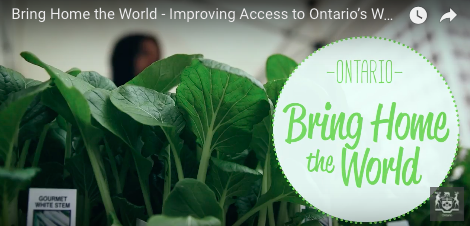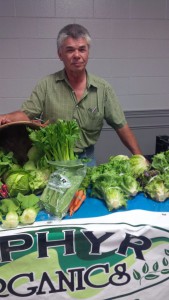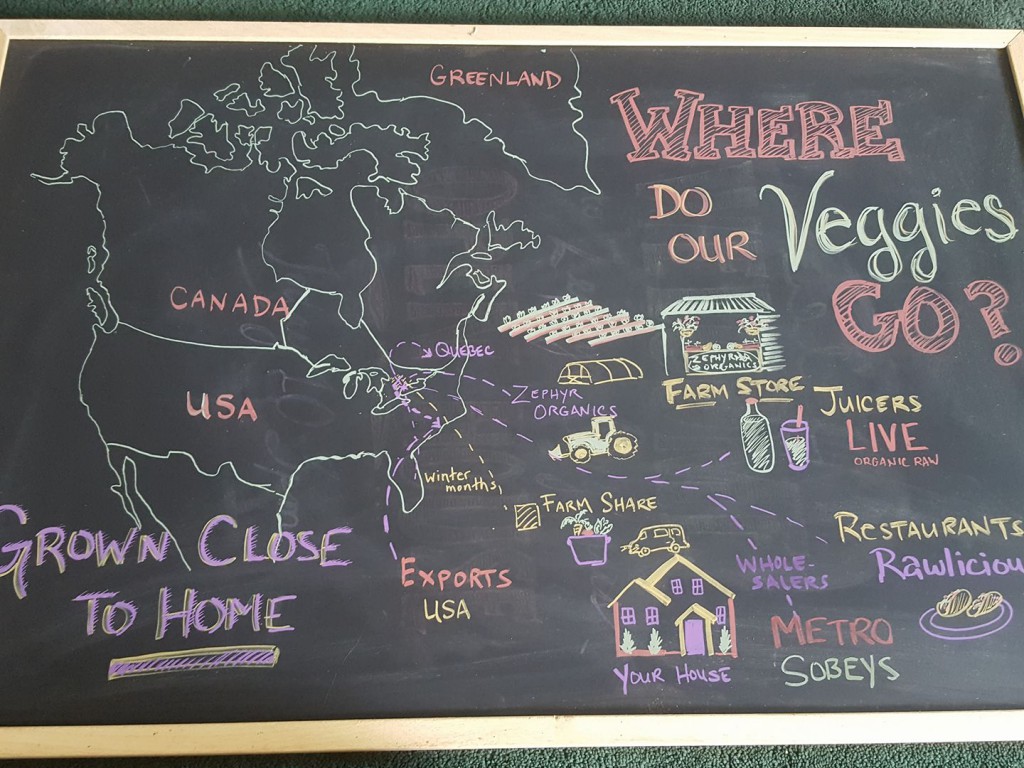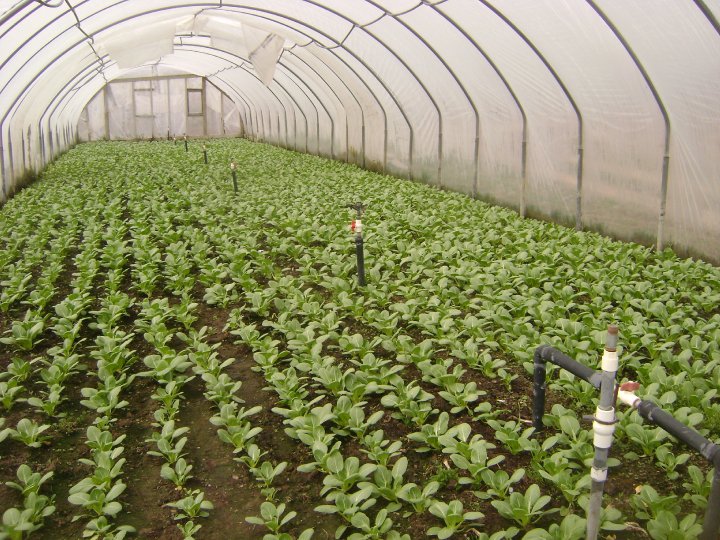 A diverse population like Ontario’s brings with it a diverse, healthy appetite — so why not satiate that demand with seasonal Ontario-grown items that would otherwise be shipped in?
A diverse population like Ontario’s brings with it a diverse, healthy appetite — so why not satiate that demand with seasonal Ontario-grown items that would otherwise be shipped in?
This video, released by the Ontario Ministry of Agriculture, Food and Rural Affairs as part of their World Foods Consultation, shows some of the many reasons that we should be producing crops and food products from around the world right here at home.
‘World Foods’ reflect the diversity of the province’s population and include items like bok choy, okra, kale, quinoa, callaloo, amaranth and much more. Although you may see these items on supermarket shelves here, they have usually been transported thousands of miles to get there.
Zephyr Organics, located in Durham Region, is a family farm that has been in operation for 3 generations, growing various vegetables, herbs and fruits for the past 26 years. Currently, about 60 different items are grown on the 200-acre farm, about 20 are considered “main” crops. The farm is owned and operated by Ted and Jannette Eng, their son Douglas and his wife Jennifer, and their children Tytus and Naomi. The farm was started in 1950 by Ted’s father, and in 1991 achieved its organic certification.
Ted knows firsthand about satisfying this consumer-driven demand for locally-grown foods that originated elsewhere.
“We started with only 2 acres of kale, now we’re up to 30,” Ted tells us.
 Kale, brassica oleracea, a member of the cabbage family, is a trendy vegetable found in salads, cooked greens and chips. The origins of this vegetable stretch back to ancient Greece, and the vegetable found uptake in Canada through Russian traders in the 19th century. Eaten raw, kale is a great source of Vitamins K, A, B6, C and E as well as many other nutrients and antioxidants.
Kale, brassica oleracea, a member of the cabbage family, is a trendy vegetable found in salads, cooked greens and chips. The origins of this vegetable stretch back to ancient Greece, and the vegetable found uptake in Canada through Russian traders in the 19th century. Eaten raw, kale is a great source of Vitamins K, A, B6, C and E as well as many other nutrients and antioxidants.
Zephyr Organics is also known for specializing in organic baby bok choy, which otherwise would be coming in from places like California; the Eng’s have been growing it for almost 30 years now, and so have watched the demand for these items soar over the years, led by consumers’ appetites.
“World crops are healthy, filled with nutrition,” Ted shares, “we grow these products because they’re nutritious. Doctors recommend these things, they help people naturally meet their dietary requirements, instead of through a pill. They’re high in certain proteins, iron and fibre.” He adds, “the Shanghai baby bok choy is very high in iron.”
The sun provides all the heat needed for the baby bok choy, which Ted says is seeded every week, and grows for about 9 months in a hoop house on the farm, harvested weekly from April-December (sometimes January).
While a lot of Zephyr’s crops are consumed in Canada, they do ship elsewhere as well; some of their kale goes to Michigan, where it’s then dried to be added to food as a topping, like ground pepper.
More of this Ontario-grown food means more Ontario jobs and dollars. It also means diminishing a carbon footprint from foods that would previously only be imported. Naturally, it also means fresher food with better taste.
“Offering these products that are healthy and fresh is why we’ve been able to expand so much over the years,” Ted says.
Their farm employs up to 26-30 people in varying positions, 7 of them full time.
 “And our products are shipped all over,” Ted says, “including into the States, sometimes 600 cases a week.”
“And our products are shipped all over,” Ted says, “including into the States, sometimes 600 cases a week.”
The Zephyr harvest is distributed through a variety of wholesalers, restaurants and retailers, including Metro, Highland Farms and Mama Earth Organics. Jennifer runs the popular Farmshare CSA program, which delivers in Durham, York and North Toronto regions, offering colourful assorted boxes of their various in-season crops.
This Toronto Star piece by Owen Roberts, Local food is becoming more worldly and diverse: The New Farm, reports that researchers from the University of Guelph “determined back in 2012 that the market for what are now called ‘world crops’ was already more than $60 million a month, just in the Greater Toronto Area. Further studies now peg that estimate at $80 million.”
As part of the provincial Local Food Strategy, earlier this year, OMAFRA launched “Bring Home the World”, aiming to expand Ontario’s local food market and grow the agri-food sector through the promotion of World Foods.
This initiative includes government funding toward research with the Vineland Research and Innovation Centre to identify ways to grow more world foods in Ontario.
“Ontario is the most culturally diverse province in Canada, and our farmers and agri-food manufacturers are already growing and producing many world foods, such as bok choy, napa cabbage, Chinese broccoli and goat meat,” the OMAFRA news release states. “This strategy will increase access to an even wider variety of Ontario-grown and made produce, meats and food products from other cultures and places around the world to better meet the needs of families and communities across the province.”
Farmers like Ted are ahead of the curve, but have helped to prove that the flourishing demand (and thus opportunity) in “world foods” is undoubtedly there. A healthy appetite is a diverse one, and Ontarians have proven themselves hungry for more.
If you’re interested in learning more, OMAFRA has released a World Food Discussion Paper, and is currently seeking consultation on the Bring Home the World project via an online survey, open until November 3: https://www.surveymonkey.com/r/worldfoods

